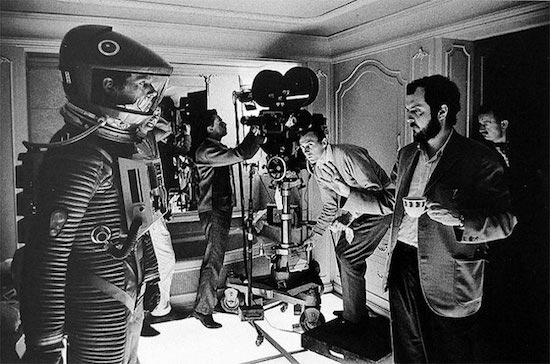Stanley Kubrick is one of my all-time favorite directors. I wasn’t even born when 2001: A Space Odyssey debuted in 1968 and my first experience with the film was in high school, watching it on a rented VHS tape. Even with that dismal presentation of such a ground-breaking film, I loved it.
Later, I’d have the chance to see 2001: A Space Odyssey on one of the largest movie theater screens in North America, the Seattle Cinerama. I’m not exaggerating when I say that when the intermission (yes, they included the glorious intermission) played, I was speechless. I just stared at the screen for a few minutes. I was in awe of of the film now seeing it the way it was meant to be presented.
When the film ended, I felt I’d gone through the infinite with Dave Bowman. The experience was something more akin to spiritual. Absolutely stunning.
2001: A Space Odyssey and Narrative
For as much as I love 2001: A Space Odyssey (and Kubrick’s other films as well), I am fully aware there is a large segment of the population that would probably use one word to describe it. Weird.
Part of this perception comes from the disjointed narrative of the film. We jump millions of years between scenes in some cases. It’s actually more like four vignettes that tie together thematically. To understand 2001, you need to look for the thematic similarities between scenes.
It’s a very unconventional approach for a film, especially in 1968 when it was released. Part of the reason for this is something I only became aware of recently. There’s a great article here that goes through a list of FAQ’s about Kubrick. One mentions something called non-submersible units.
Non-submersible Units
That’s what Kubrick called the most important beats in the story. When you pulled away all the dialogue, character moments, action, set pieces, etc. What’s left are only the most memorable and important story elements. Kubrick’s non-submersible units for 2001 are:
1) The monolith visits humankind in its infancy
2) An early man discovers technology
3) The monolith is excavated on the moon by astronauts and sends a message to Jupiter
4) Humankind send a manned mission to Jupiter to investigate
5) Advanced technology (Hal) endangers the mission crew
6) Technology is defeated and the surviving crew member rendezvous with the aliens
7) The Starchild is born
Taken on their own, they don’t really tell much of a story. But they are the basic building blocks of the themes to 2001. Kubrick actually had a dislike for pure narrative. This is probably why his films work on multiple levels and are so visually stunning.
What Storytellers can Learn from Non-Submersible Units
I love storytelling. More important than the format (campfire, film, comics, literature) is the story itself. Great stories transcend their format. I have vivid recollections of certain story beats to otherwise forgettable narratives. Key scenes stick with me. Those memories are the non-submersible units of that story. They are the core building blocks.
When I’ve approach a new story lately, I’ve been focusing more on the building blocks and even trying to think about theme more upfront. It’s made the stories more visceral and compelling. It’s also made them fit together on multiple levels. Kubrick’s non-submersible units are a great way to get at the “good parts” of the story without letting the overall narrative get in the way.

I found this insightful and the ideas behind it are stirring some thought on how to address aspects of my writing that have been bothering me. Thanks!
Thanks Robin! I get lost in the details sometimes so this helped me keep more focus on the really important stuff.